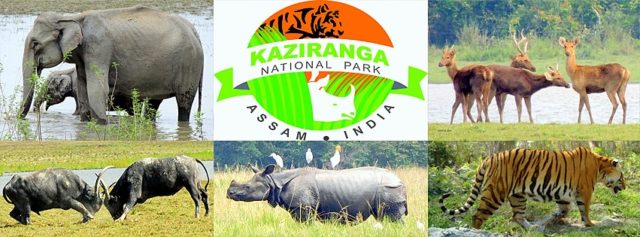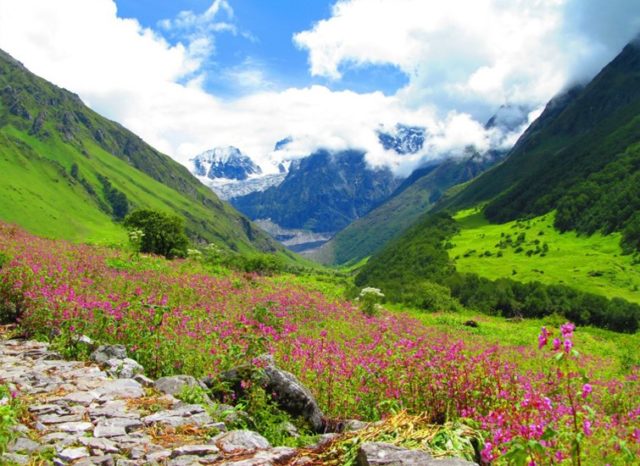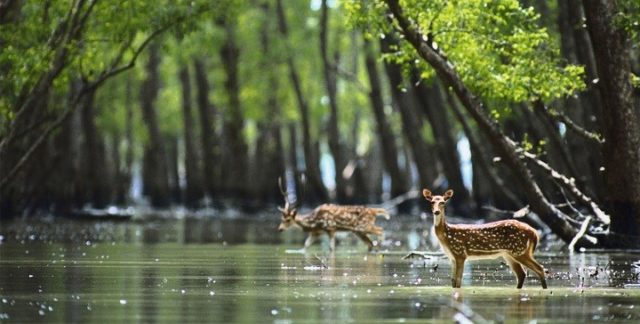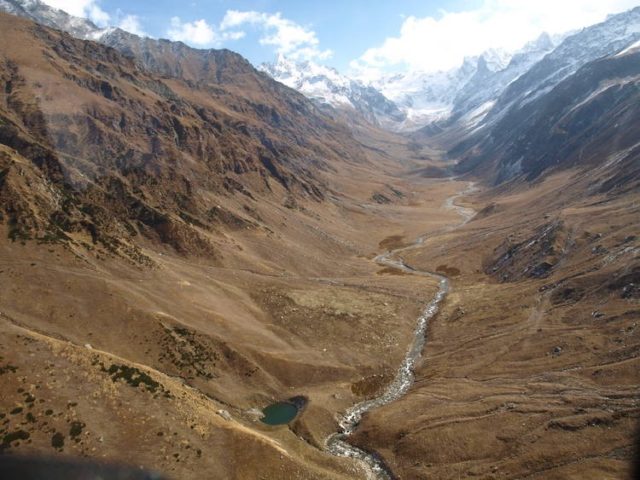PREVIOUS
UNESCO World Heritage Natural Sites - II
December 30 , 2017
2917 days
18347
0
UNESCO World Heritage Natural Sites - II
- - - - - - - - - - - - - -
1) Kaziranga,Assam,1985
- Kaziranga, located in the Northeastern state of Assamin the flood plains of the Brahmaputra River’s south bank.
- The park has the distinction of being home to the largest population of the great Indian one-horned rhinoceros.

.
2) Manas Wildlife Sanctuary,Assam,1985
- Manas Wildlife Sanctuary, located in in the plains of the Manas Riverin the foot hills of the Himalayas, on the border with Bhutan(contiguous with the Manas Wildlife Sanctuary in Bhutan).
- Endangered species include tiger, pygmy hog, clouded leopard, sloth bear, Indian rhinoceros, wild buffaloes(the only pure strain of buffalo in India), Indian elephants, golden langurand Bengal florican.

.
3) Nanda Devi and Valley of Flowers National Parks, Uttarakhand 1988 ,2005
- Nanda Devi and Valley of Flowers National Parksare nestled high in West Himalaya.
- This richly diverse area is also home to rare and endangered animals, including the Asiatic black bear, snow leopard, brown bearand blue sheep.
- It was established as a national park on 6 November 1982. However, it was initially established as a game sanctuary on 7 January 1939.

.
4) Sundarbans National Park, West Bengal,1987
- The Sundarbans National Park, the largest estuarinemangrove forestin the world is a national park, tiger reserve, UNESCO World Heritage Site and a biosphere reserve located in the Sundarbans Ganges river delta bordering the Bay of Bengal, in West Bengal.
- It is also on the UNESCO World Network of Biosphere Reserves.
- It is integral to the world's largest delta of 80,000 km2formed from sediments deposited by the three great rivers, the Ganges, the Brahmaputraand the Meghna, which confluence in the Bengal Basin.
- The entire basin is traversed by a complex network of interconnecting waterways.
- This region is densely covered by mangrove forests, and is one of the largest reserves for the Bengal tiger.
- It is also home to a variety of bird, reptileand invertebrate species, including the salt-water crocodile.

.
5) Western Ghats, 2012
- Western Ghats, also known as the Sahyadri Mountains, a mountain range along the western side of India and one of the world’s ten "Hottest biodiversity hotspots" (sub cluster nomination) A total of thirty nine properties (including national parks, wildlife sanctuaries and reserve forests) were designated as world heritage sites – twenty in the state of Kerala, ten in Karnataka, five in Tamil Naduand four in Maharashtra.
- Sub-Clusters:
- Agasthyamalai Sub-Cluster
- Periyar Sub-Cluster
- Anamalai Sub-Cluster
- Nilgiri Sub-Cluster
- Talakaveri Sub-Cluster
- Kudremukh Sub-Cluster
- Sahyadri Sub-Cluster

.
6) Great Himalayan National Park, Himachal Pradesh,2014
- Great Himalayan National Parkat Kullu, Himachal Pradesh, is characterized by high alpine peaks, alpine meadows and riverine forests.
- The 90,540 ha property includes the upper mountain glacial and snow melt water source origins of several rivers, and the catchments of water supplies that are vital to millions of downstream users.
- It is part of the Himalaya biodiversity hotspot and includes 25 forest types along with a rich assemblage of fauna species, several of which are threatened.

.
7) Keoladeo National Park, Rajasthan, 1985
- Keoladeo National Parkin Bharatpur is located within the Indus-GangesMonsoon Forest Biogeographical Province.
- It was declared a national park in 1982. Earlier to this, in 1900, it was a duck-hunting reserve of the Maharajas of Bharatpur, then became a bird sanctuary in 1956, with the Maharajas exercising shooting rights till 1972, and was recorded as a Ramsar Wetlandsite, in 1981.
- The area of the wetland of the park shrinks to 1,000 hectares (2,500 acres) during most part of the year.
- It has a human-built environment created partly by embankments dividing the area into 10 units, and has sluice controlled arrangement to maintain the water level.
- It is famous for 364 species of wintering birds that flock in large numbers, arriving from distant countries of Afghanistan, Turkmenistan, Chinaand Siberia.
- It is surrounded by 17 villages and the Bharatpur city.

.
Mixed World Heritage Site
Khangchendzonga National Park,Sikkim,2016
- Khangchendzonga National Park (KNP), Sikkim has been inscribed as India’s first “Mixed World Heritage Site” on UNESCO World Heritage List, by fulfilling the nomination criteria under both natural and cultural heritage.
- Located at the heart of the Himalayan range it includes a unique diversity of plains, valleys, lakes, glaciers (including the 26 km long Zemu Glacier) and spectacular, snow-capped mountains covered with ancient forests, including the world’s third highest peak, Mount Khangchendzonga.

.
- Three main different facets:
- firstly, the notion of beyul or hidden sacred land, which extends to all of Sikkim, but has its heart in the territory of Khangchendzonga National Park, is important in Tibetan Buddhism.
- secondly, the multi-layered sacred landscape of Khangchendzonga and the cultural and religious relevance of the hidden land (beyul in Tibetan Buddhism and Mayel Lyang, in Lepcha tradition) is specific to Sikkim and is a unique example of co-existence and exchange between different religious traditions and people.
- thirdly, the indigenous religious and cultural practices of the Lepcha with regard to the ecology and the specific properties of local plants, which stand as an outstanding example of traditional knowledge and environmental preservation.
- - - - - - - - - - - - - -
Leave a Reply
Your Comment is awaiting moderation.


